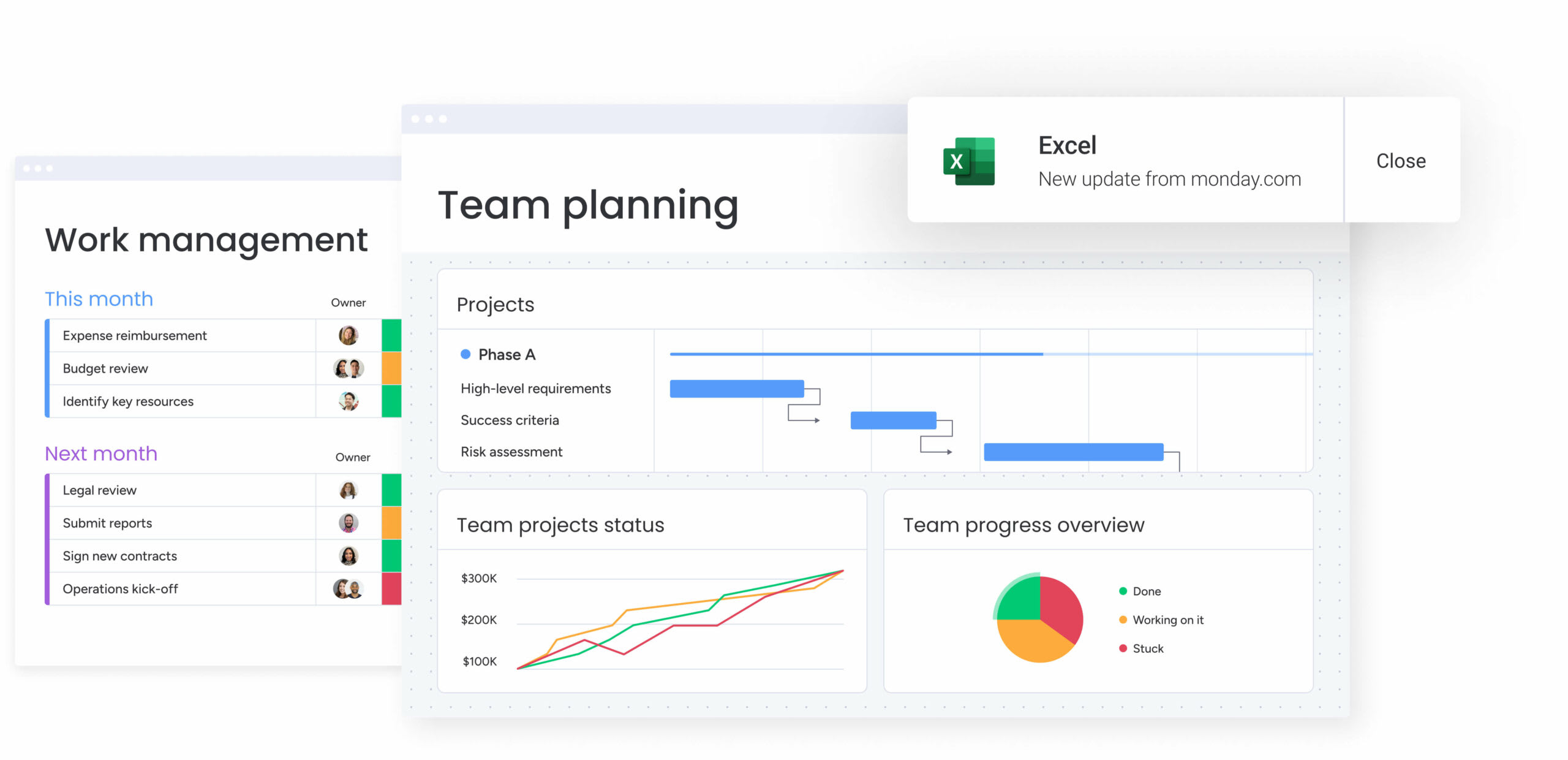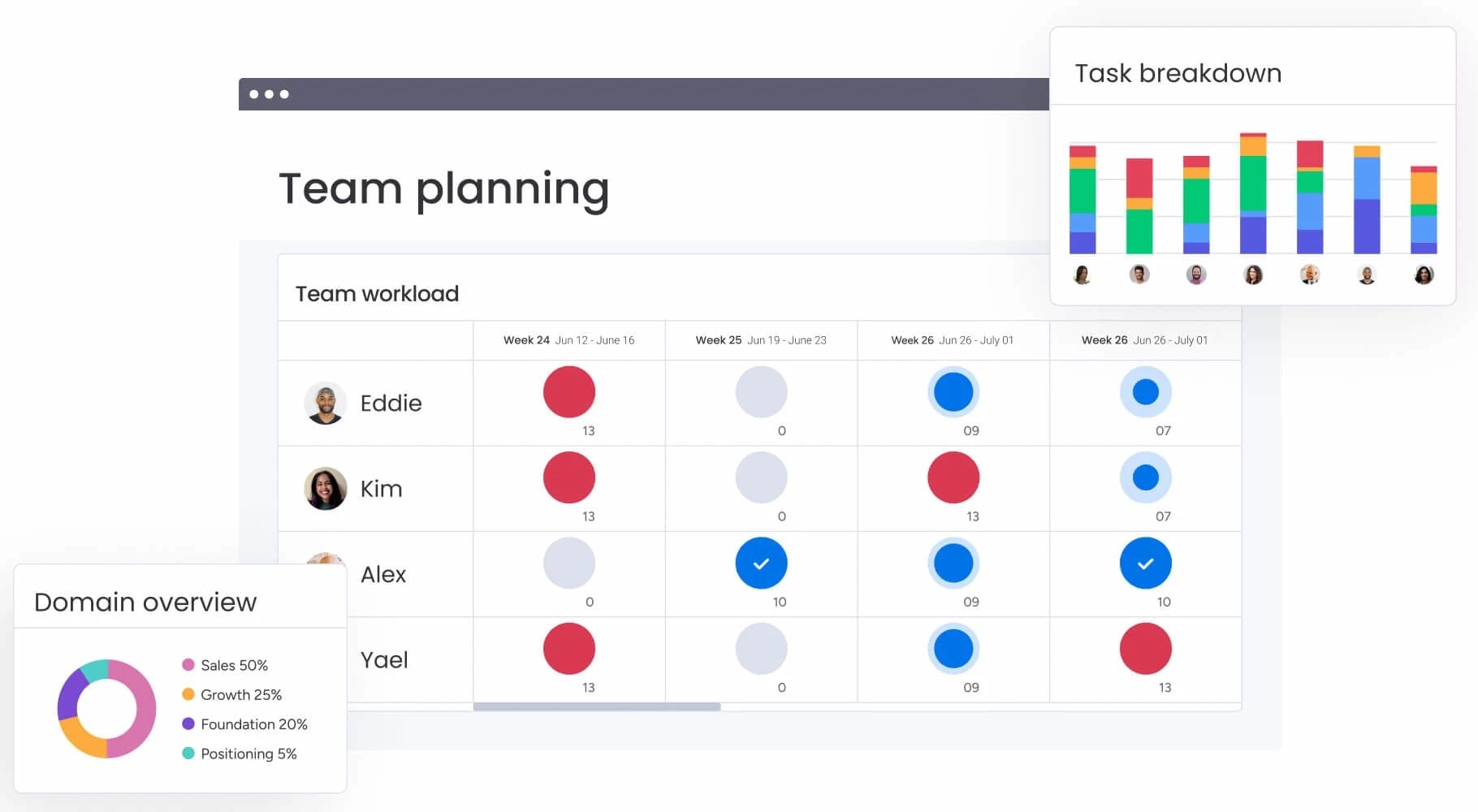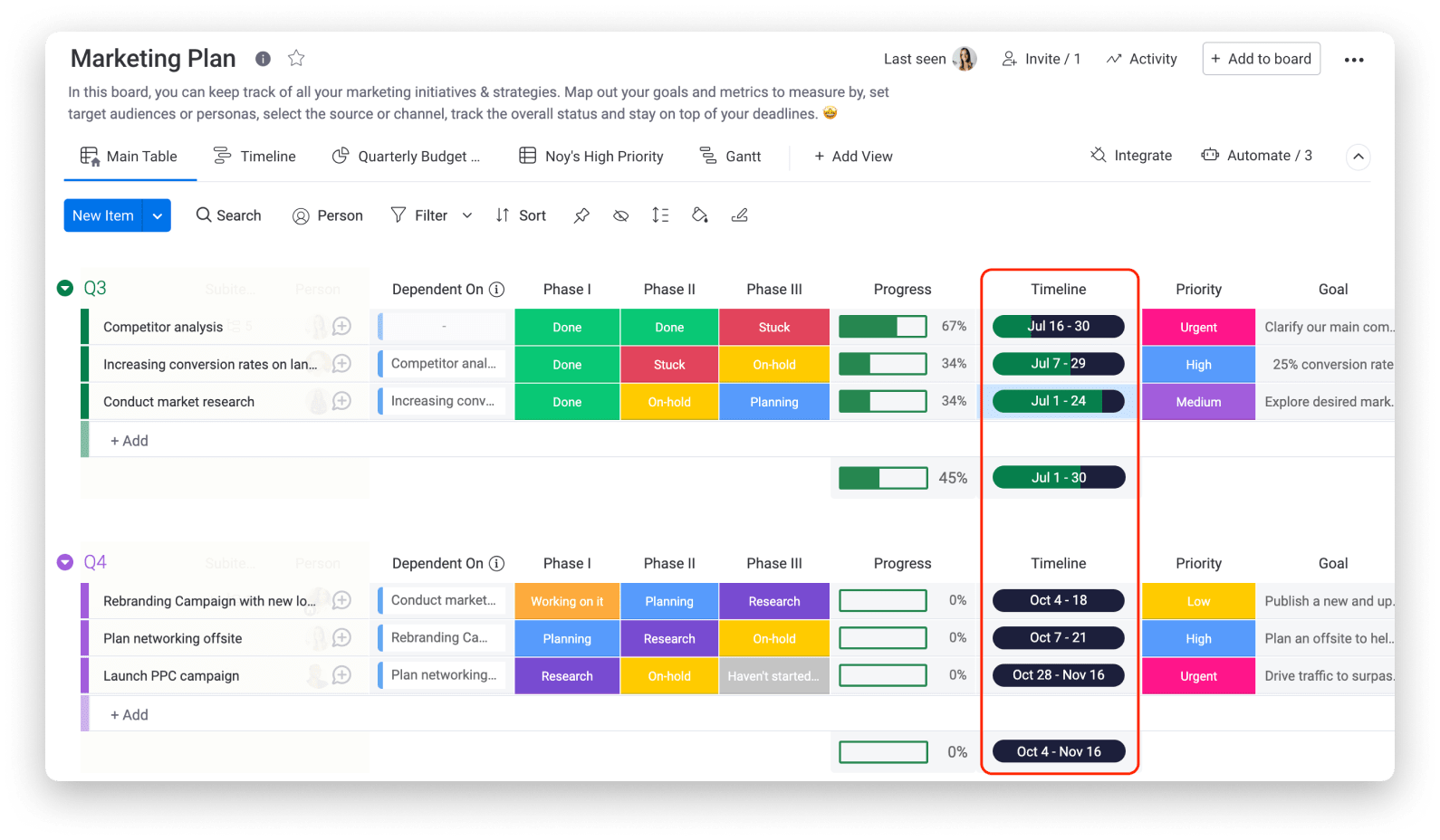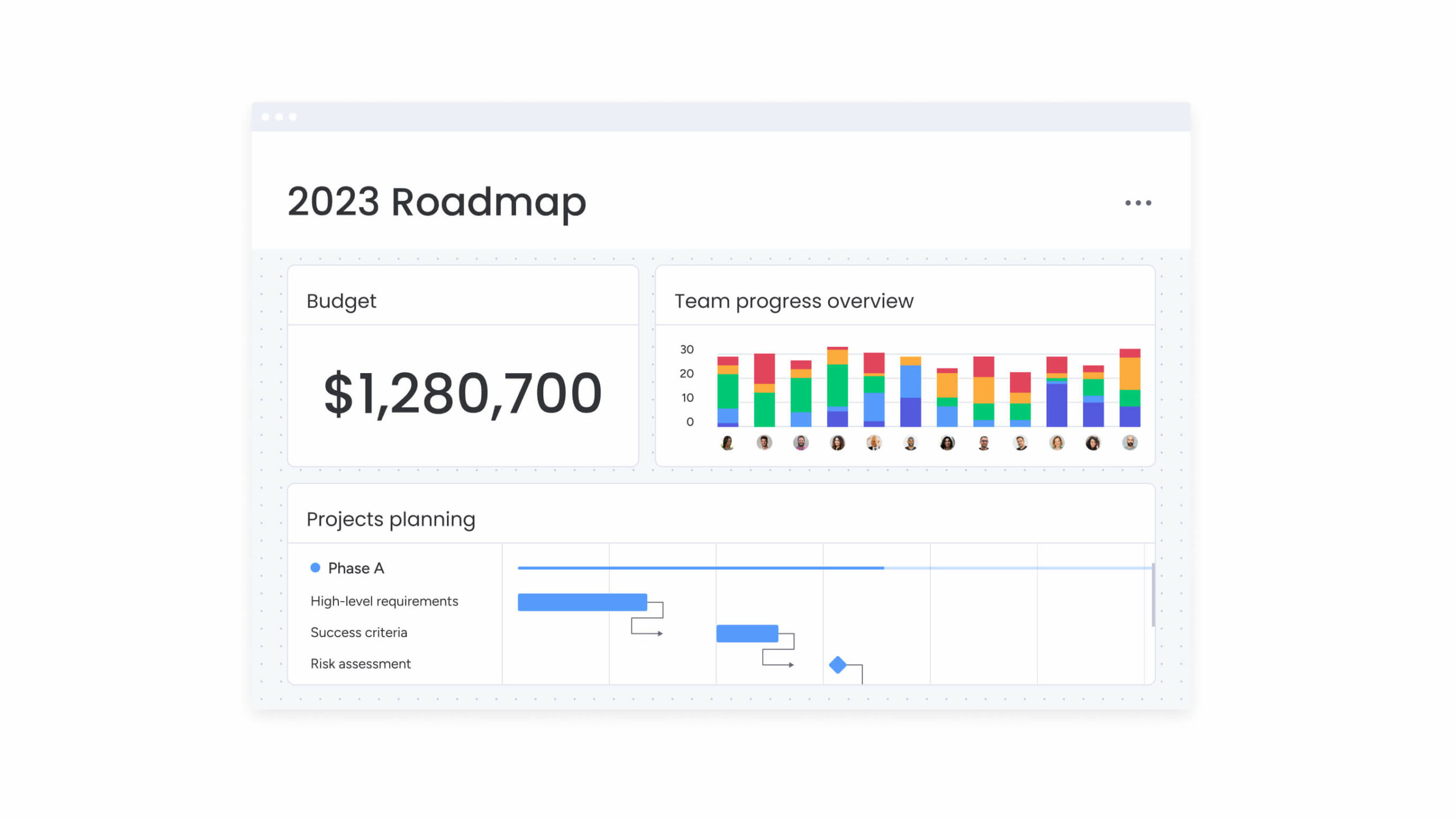In today’s fast-paced business world, sometimes it feels like you need a crystal ball to understand and plan for the future. Coordinating between project needs and team availability and skills requires planning and a deep understanding of a work forecast. Resource forecasting does just this: helps organizations and teams understand how to allocate resources appropriately with an emphasis on future planning.
monday.com can help you visualize resources, making resource forecasting easy and an integral part of your workflow. In this blog, we’ll understand resource forecasting, why you need it, and how monday.com can help.
Get startedWhat is resource forecasting?
Resource forecasting is an integral part of resource management in project management. You can think of it as the first step, helping you to predict the future needs of your company when it comes to resources: manpower, materials, and other resources.
Resource forecasting helps you save time and effort and avoid waste by understanding your organization’s needs and identifying issues before they arise. To do this, you’ll need to know current company data, trends, and patterns to help you make informed decisions regarding moving forward.

The importance of resource forecasting
Project and resource management can’t be done in a vacuum. When a team commits to a new project, it needs to know that the resources are there: Are there enough team members available to handle the project and meet deadlines? Are there materials needed to complete the project? These are just some of the questions that PMs need to ask themselves when planning.
Resource forecasting looks at future resource needs so that teams can avoid under or overstaffing, minimize material waste, and align goals with available resources.
The difference between resource forecasting and resource planning
Resource forecasting and planning are often used interchangeably. However, they serve two different purposes.
Resource forecasting, as we’ve already discussed, looks at future needs and adjusts plans accordingly or brings in more resources as needed.
Resource planning is when you allocate resources based on these predictions. Forecasting is an important step before actually planning resource allocation.
Get startedThe benefits of resource forecasting
There are multiple reasons that all organizations should use resource forecasting as part of their resource management strategy. Here are a few:
1. Gain a clear view of your project pipeline
Resource forecasting allows you to take a look at projects moving forward and plan accordingly. This is important to boost efficiency by predicting future resource requirements and also for the feeling of control over what’s coming moving forward.
2. Make HR decisions wisely
It can take time to recruit a team member. Resource forecasting helps teams understand when their project load is exceeding their abilities as a team so that they can start the hiring process before it’s too late. This also helps with budget decisions, as team members are only hired when truly necessary.
3. Keep employees happy and satisfied
Resource forecasting helps to avoid burnout, by assigning employees an appropriate amount of work as well as helping them understand what their tasks will be moving forward. Also, employees can remain focused on their areas of expertise by coordinating projects according to their availability.
4. Make smart decisions
A clear vision of the future resources needed helps companies make more strategic, informed, and data-driven decisions. This benefits everyone: the team, management, and clients.
Resource forecasting best practices
Ready to get started with resource forecasting? Here are some top best practices.
- Use historical data: Add historical data into your project management software to help you understand how your team worked in the past. This includes time allocated on projects, types of projects worked on simultaneously, team capacity, etc. Make sure to teach team members how to track and log data so that everyone is speaking the same language.
- Use time-tracking software: Make sure that team members are logging time spent on each project so that you can gain better insights on how to allocate resources on future projects.
- Look at the individual level as well as the team as a whole: Looking at each team member’s data helps team leaders to understand who is over and who is underworked. This can help balance resources moving forward.
- Involve stakeholders: Moving to the macro level is also important in resource forecasting. Engaging different departments and stakeholders will help you gain a comprehensive view and understanding of the forecasting process.
- Use advanced software such as monday.com: Resource management software such as monday.com offers a wide range of features that help you track, understand data, and forecast simply and aesthetically.
Using monday.com for resource forecasting
monday work management takes all of your data and information and organizes it in a way that makes resource forecasting easier than ever. At monday.com, we believe in making your data accessible (and beautiful!), so that you can understand exactly how you are using resources and how you should allocate them moving forward.
Let’s look at some of the features that will help you resource forecast.
Time tracking column
Tracking time in monday work management is simple. Just add the appropriate column to your board and ask team members to log their time (in real-time or manually after the fact). This is an important first step to understanding how your resources are used today.
Understand team availability through the workload view
This view helps you to visualize and also track the hours that team members are putting into a specific task or project. This gives you valuable information at a glance to understand who is available and who isn’t.

Timeline column and view
The timeline column (and view) helps you to set timelines for projects now and in the future. This is important so that you can visualize which projects are happening at what times and if things are overlapping, leading to stress on your resources.

Dashboards
Dashboards give you the chance to tie information together and round it up from multiple boards so that you can have all the info you need available at one click of a button. See team progress, upcoming projects, and so much more.

Start planning for the future today with monday.com
Resource forecasting is an important tool to help teams remain in control of their time and energy, and of course to make sure they are on the road to success.
By using monday work management in resource management and forecasting, teams can gain valuable insights and make data-based decisions regarding any aspect of the project management cycle. What are you waiting for? It’s time to get forecasting…
FAQs
What are the human resource forecasting techniques?
Human resource forecasting helps HR teams understand their recruitment needs moving forward in time. Part of resource management, this technique is critical for hiring based on data and insights and not on gut feelings.
What is resource forecasting?
Resource forecasting is a project management tool that helps teams understand resource needs moving forward to effectively and efficiently allocate resources and bring on new resources if necessary.
What is human resource forecasting?
Human resource forecasting is a method of understanding human resource needs for a team based on upcoming projects and tasks.
 Get started
Get started 
